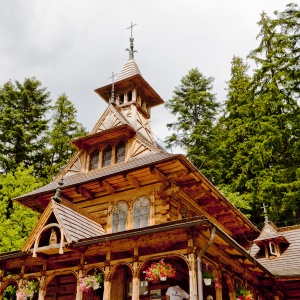Pearls of Architecture
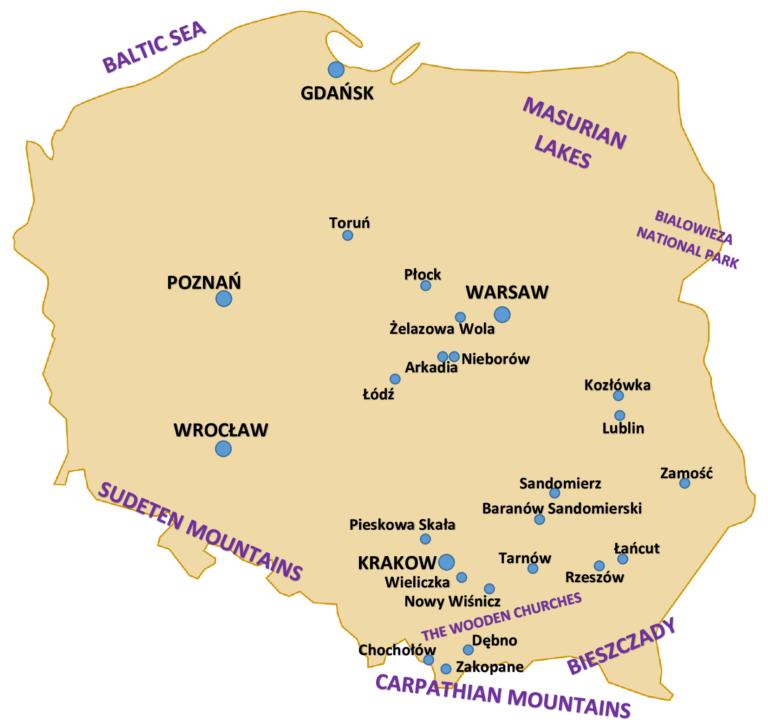
DAY 1 – arrival in Warsaw and overnight.
DAY 2 – sightseeing tour of Warsaw, including Wilanów Park and Palace.
DAY 3 – drive to Toruń, en route stop in Płock, one of the oldest Polish towns. Visit to the Tumskie Hill with a Romanesque Cathedral from the 12th century. Sightseeing tour of Toruń, an unique example of Gothic architecture from the 13th century. Overnight in Toruń.
DAY 4 – drive to Kraków via Łódź. In Łódź the“cotton empire”tour: Israel Kalmanowicz Poznański Palace with Historical Museum of Łódź and factory buildings, the Księży Młyn – an unique factory and residential complex, the most elegant street in Łódź Piotrkowska Street. Lunch at a local inn. Overnight in Kraków.
DAY 5 – sightseeing tour of Kraków including visit to Wawel Royal Castle and Cathedral. Evening at Renaissance castle in Pieskowa Skała. Overnight in Kraków.
DAY 6 – full day trip to Zakopane. Visit to the Chapel in Jaszczurówka, the wonderful example of the 19th century wooden architecture. Drive to Chochołów, a living museum-village with wooden houses dating back to the 18th century. Visit to Dębno with its wooden church from the 15th century. Overnight in Kraków.
DAY 7 – departure for Rzeszów. En route stop in Wieliczka to visit the salt mine. Drive to Nowy Wiśnicz, a castle with an interesting combination of Gothic, Renaissance and Baroque styles. Lunch en route. Continue to Tarnów, a medieval town with Gothic city hall and cathedral. Overnight in Rzeszów.
DAY 8 – departure for Zamość. En route stop in Łańcut with Potocki Palace and park and unique Museum of Carriages. Drive to Baranów Sandomierski, a castle from the 16th century with mannerist decorations by Tylman von Gameren. Lunch en route. Visit to Sandomierz, a town dating back to 10th century, which is famous for its Gothic and Renaissance architecture. Overnight in Zamość.
DAY 9 – sightseeing tour of Zamość, a Renaissance complex of the 16th century founded by the Zamoyski family, in the pasthousing one of the oldest Polish universities. Departure for Warsaw. En route stop in Lublin. Walk through the Old Town. Visit to the Castle’s Chapel with a 14th century polychrome, the most precious example of Russian-Byzantine painting. Drive to Kozłówka to visit the Zamoyski Palace. The former coach-house holds a collection of 1950’s Socialist Realist art, the optimistic style of propaganda imposed on artists under the Communist regime. Overnight in Warsaw.
DAY 10 – full day trip to Arkadia and Nieborów, picturesque palaces built for the Radziwiłł family, a visit to Żelazowa Wola, the birthplace of Frederic Chopin. Optionally: evening piano concert at the Palace on the Water in Łazienki Park with a glass of sparkling wine during intermission. Farewell dinner and overnight in Warsaw.
DAY 11 – departure transfer.
Warsaw sightseeing tour
The tour starts at the hub of the Old Town: Market Square and continues with St. John’s Cathedral, the Barbican and Castle Square; a drive along the Royal Route with its numerous churches, monuments, historic buildings and palaces, past the Parliament; a walk through the grand Łazienki Park with its Palace on the Water, and Chopin monument.
On the way back, there is a pause to pay respects at the former Jewish Ghetto monuments, followed by a drive past the imposing building of the Grand Theatre and the Tomb of the Unknown Soldier.
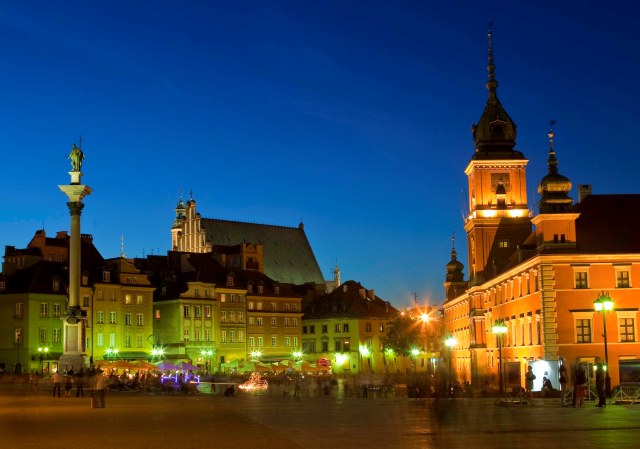
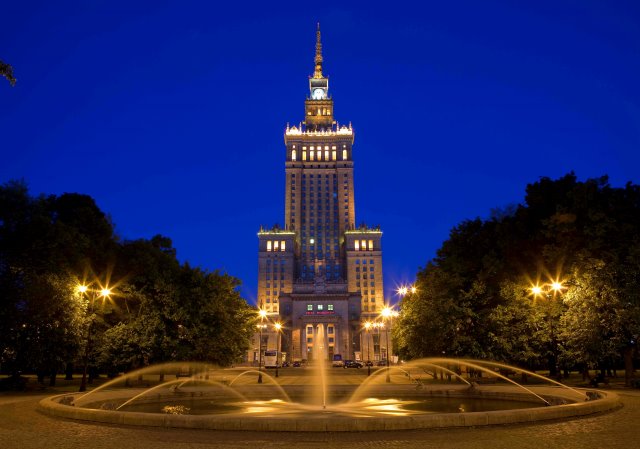
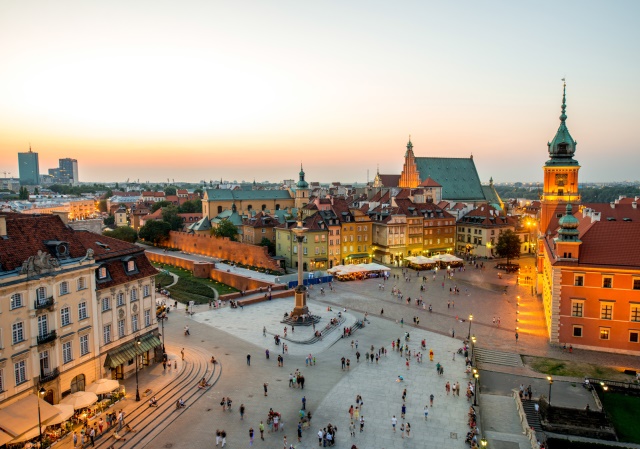


Wilanów Park and Palace
This summer residence of King Jan III Sobieski is often called “Little Versailles”. Its magnificent interiors include furniture and china from the period of Sobieski’s victory over the Turks at the gates of Vienna in the 17th century.
The grounds consist of an English park, an Italian Baroque garden and rose garden.
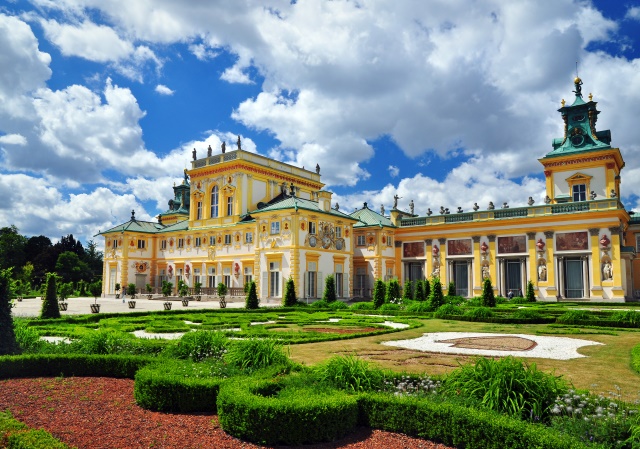
Płock
One of the oldest Polish towns. Visit to the Tumskie Hill with a Romanesque Cathedral – one of the oldest basilicas in Poland dating back to the 12th century, where the first Polish rulers rest.
Toruń
This charming Gothic town is a birthplace of Nicolaus Copernicus and also home to the famous Polish gingerbread.
A walking tour my include visits at Copernicus home, a Gothic Town Hall and a Gingerbread Museum. Ideal place for a stay or just a stop en route.

Łódź
The“cotton empire”tour: Israel Kalmanowicz Poznański Palace with Historical Museum of Łódź and factory buildings, the Księży Młyn – an unique factory and residential complex, the most elegant street in Łódź Piotrkowska Street.
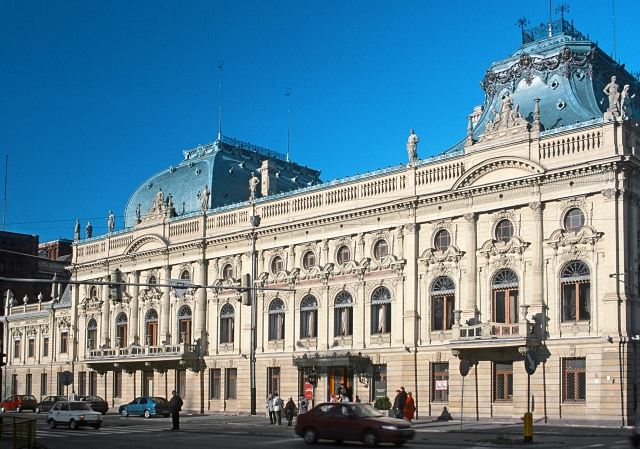
Krakow sightseeing tour
Market Square, one of the biggest in Europe, a reminder of the power and wealth of medieval Kraków, the Polish capital at that time.
The 13th century Cloth Hall, rebuilt in Renaissance style, houses the largest collection of Polish paintings on the first floor and colourful handicraft stalls in the ground floor arcades.
Saint Mary’s Church, dating back to the year 1221, boasts the precious 15th century Witt Stwosz altar.
Collegium Maius with its Gothic arcades, was once home to the Jagiellonian University.
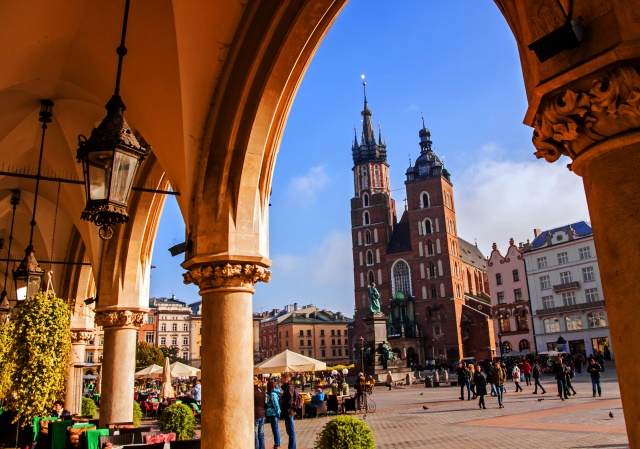
Pieskowa Skała
Visit to the Renaissance Castle in Pieskowa Skała, regarded as the most beautiful knights’ castle in Poland.

Zakopane
Zakopane is a good base to begin your great adventure in the Tatras and Podhale region. The town is an attractive mountain resort and a popular centre of sports and tourism. Visit to the Chapel in Jaszczurówka, the wonderful example of the 19th century wooden architecture.
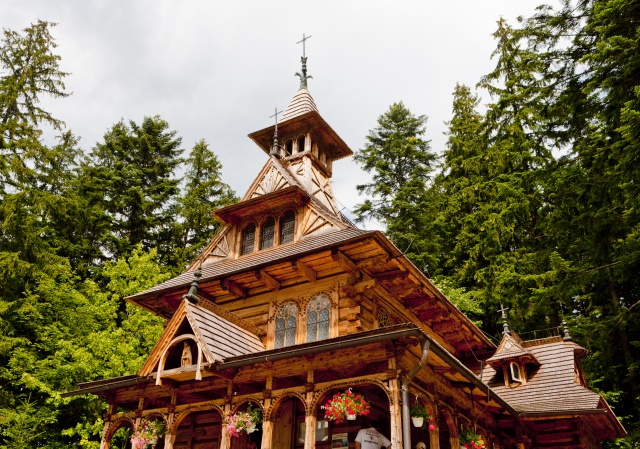
Chochołów
A village located at the foot of the Tatra Mountains. Well known for traditional, old wooden houses built by the Polish highlanders, located on both sides of the main road.
Chocholow is famous for wooden sculptures, colourful embroideries or beautiful glass paintings. Various workshops are organised for tourists wishing to learn the local art.
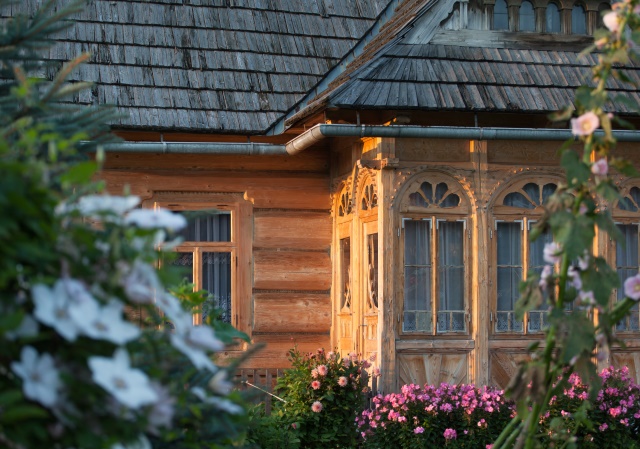
Dębno
St. Michael Archangel’s Church in Dębno – a Gothic, wooden church located in the village of Dębno from the fifteenth-century, which together with different churches is designated as part of the UNESCO Wooden Churches of Southern Lesser Poland.
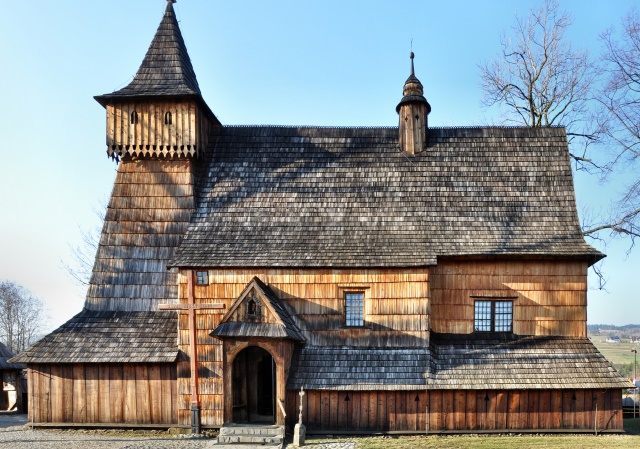
Wieliczka
A tour of the mine includes beautiful chapels sculpted in salt (Saint Kinga’s chapel is the most beautiful one), crystal-like grottoes and underground ponds. All this at average depth of 130 m below the ground in the world oldest enterprise which has never stopped working!
Nowy Wiśnicz
A castle with an interesting combination of Gothic, Renaissance and Baroque styles.
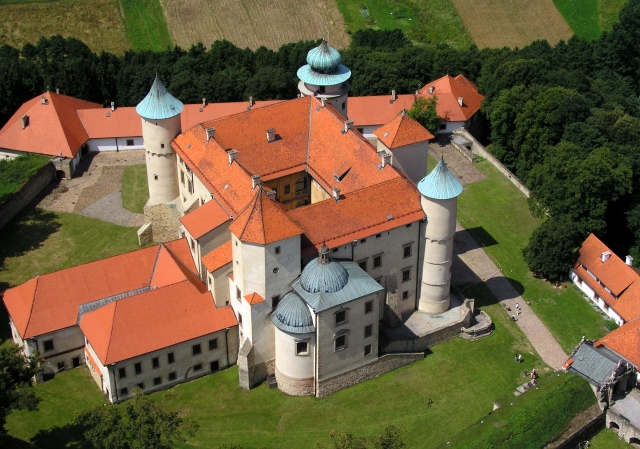
Source: Wikipedia
Tarnów
For centuries the town was a private property and belonged to powerful families. On the Mount St. Martin there are ruins of a castle from fourteenth century. The oldest building it the Renaissance colourful Market Square dates from 1524.
Worth seeing are also for the Renaissance town hall and the mikvah – a ritual bath in the Moorish style from 1904.
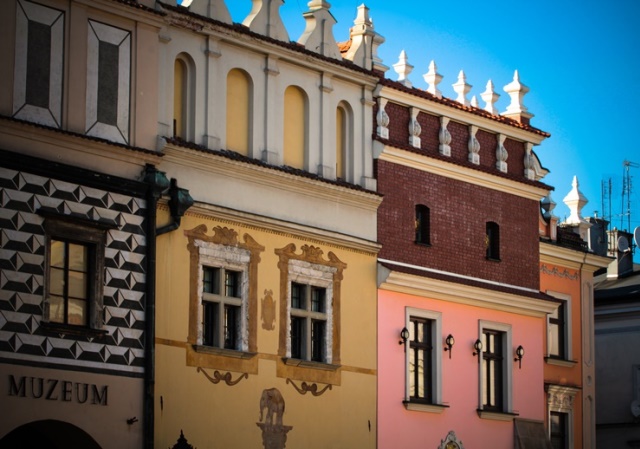
Zamość
A UNESCO World Heritage Site. This unique city was founded in 1580 and its centre has maintained its original Renaissance plan. The Old Town Square is surrounded with Renaissance houses with arcades and imposing Town Hall.
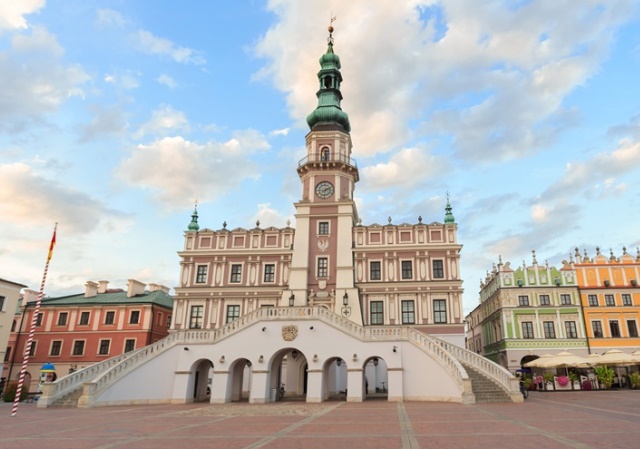
Łańcut
Łańcut castle was was originally built in the 16th century. Reconstructed in the French Baroque style. Surrounded by fortifications and a magnificent park, it houses a museum of interiors, exhibitions of paintings, sculpture, china, tapestries and old furniture.
The Museum of Carriages, consisting of over fifty “britzkas”, chaises, hunter’s – and mail-coaches is what brings many visitors to Łańcut.
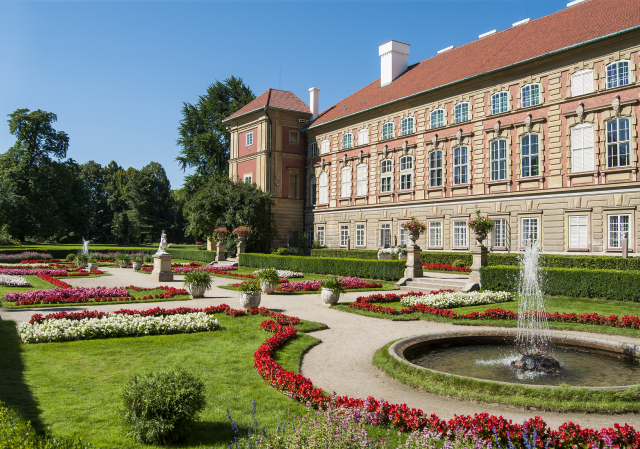
Sandomierz
One of the oldest towns in Poland.
The region’s capital since the 12th century, it suffered from Tartar invasions several times in the 13th century.
The town is now considered one of the best examples of Gothic and Renaissance urban architecture.

Baranów Sandomierski
Baranów Sandomierski castle is one of the grandest residences in Poland.
Many famous artists worked here, including: Santi Gucci and Falconi. Completed in 1602, later rebuilt by Tylman von Gameren, became one of the most beautiful Mannerist residences. Now a hotel with 30 rooms.

Lublin
The Old Town dates back to the 14th century with Krakowska Gate, Town Hall and Dominican Church.
The Castle founded by Casimir the Great includes the Gothic chapel, containing a beautifully restored 14th century polychrome – reckoned the most precious Polish example of Russian-Byzantine painting.
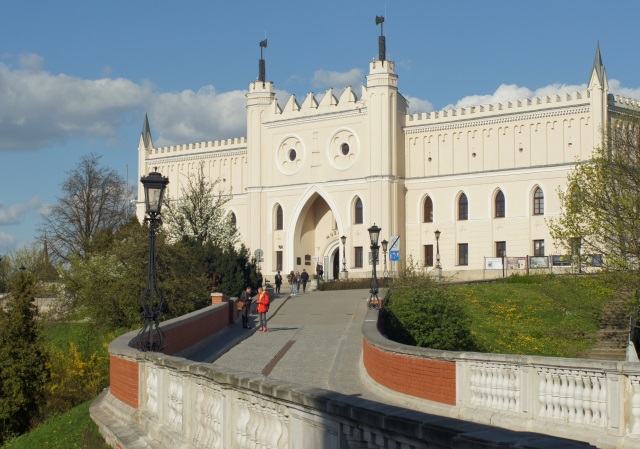
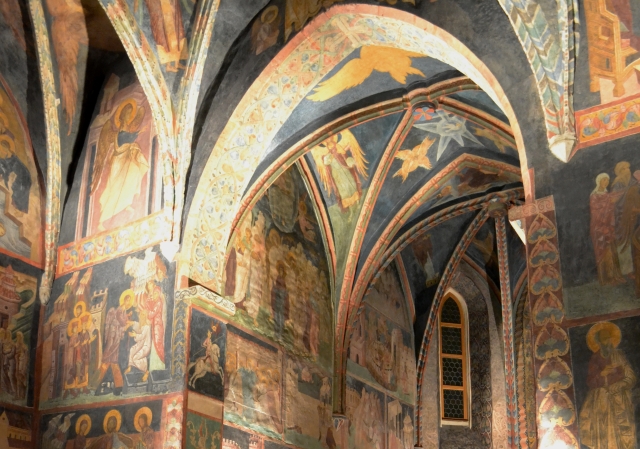
Kozłówka
The former Zamoyski family residence, founded in the 18th century and expanded at the beginning of this century. Visit to the Baroque garden, the palace with its precious paintings, sculptures and furniture.
The former coach-house holds a collection of 1950’s Socialist Realist art, the optimistic style of propaganda imposed on artists under the Communist regime. The very much unwanted monument to Polish Communist Party leader, Bolesław Bierut which used to grace a Lublin square and another to the Russian firebrand Vladimir Ilych Lenin from Poronin where he was once in exile, have found a final tranquil if mockingly inappropriate resting place here.

Arkadia, Nieborów
Nieborów has landscaped gardens and a splendid 17th century Baroque palace. Nearby Arkadia Park – boasts Romantic follies such as Diana’s Temple, and Sibyl’s Cave.
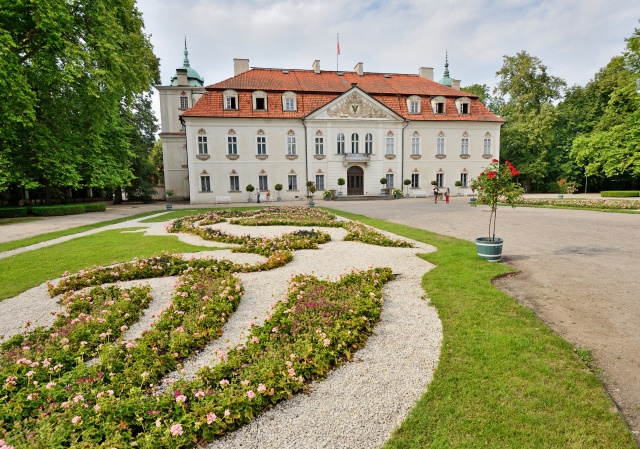
Żelazowa Wola – Frederic Chopin’s birthplace
The picturesque birthplace of the Great Polish Composer.
This charming Polish manor is surrounded by beautiful grounds with hundreds of rare plant species. The tour of the manor is accompanied by recordings of Chopin’s works. Private concerts available.


